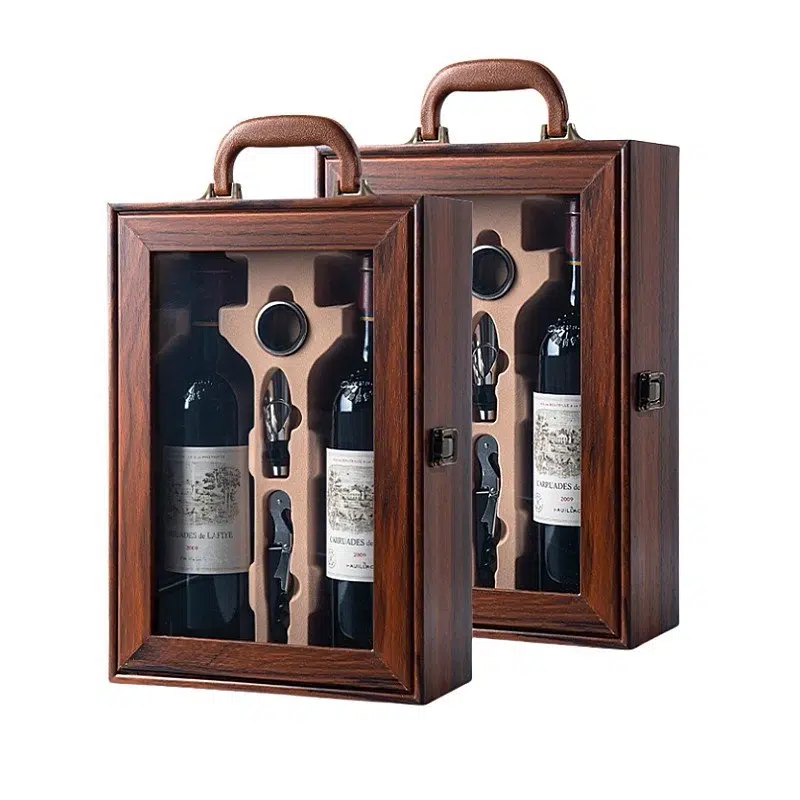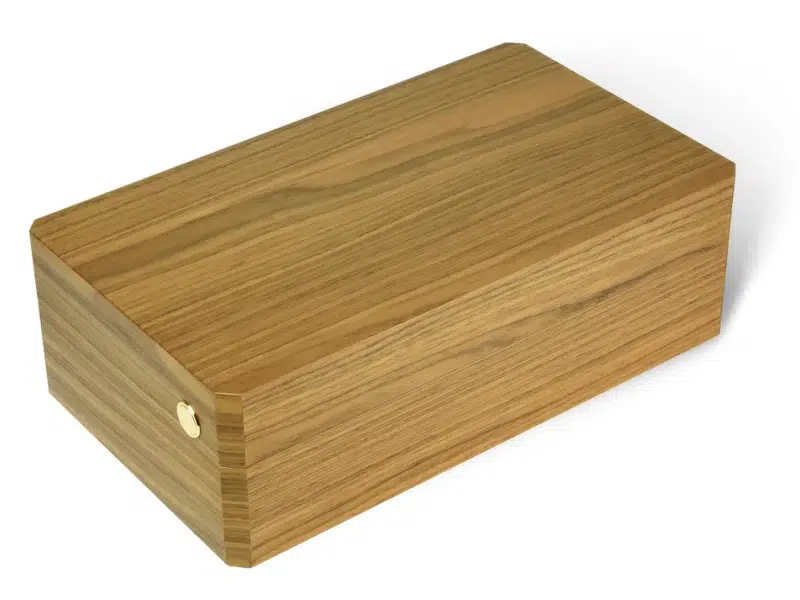
Designing packaging for two unique bottles sounds simple—but when shapes vary, it becomes a real craftsmanship challenge.
To create a luxury wine box that fits two differently shaped bottles, the structure must combine precision, flexibility, and elegance without compromising on brand presentation.
Over the years, I’ve helped many wine brands design high-end packaging for limited-edition duos—sparkling and red, tall Riesling and broad Burgundy. Each project reminded me: the key is in the internal structure. Let me share what works.
How can internal structure be customized to securely fit two bottles of varying shapes?
When bottle shapes differ—think tall and narrow vs. short and wide—the interior design can’t rely on a one-size-fits-all insert.
Here’s how I usually approach it:
- Asymmetric compartments1 with tailored profiles for each bottle
- Dual-density EVA foam2 cut precisely to hold each shape tightly
- Vertical dividers that follow the contour of the bottles, not just a flat partition
- Curved or angled recesses that cradle each bottle and add a touch of fluidity
Often, I recommend doing 3D scans of the bottles3, especially for custom molds. That ensures the final insert hugs the bottles like a glove—no wobble, no scratching.
What materials provide both elegance and protection for luxury wine packaging?
Luxury means more than just looks—it’s about tactile feel and durability.
| Material | Use Case | Premium Feel |
|---|---|---|
| Velvet-lined EVA foam4 | Protective and upscale insert base | Yes – very high-end |
| Walnut or oak veneer5 | Inner walls or trays for added structure | Natural elegance |
| Suede or microfiber6 | Soft-touch insert surface or lid interior | Smooth and subtle |
| Rigid board with wrap | Budget-conscious but can still look rich | Mid to high, depending on wrap |
The key is combining materials—structure underneath, softness on top.
How does asymmetrical design impact visual balance and brand presentation?
Asymmetry can actually feel very modern and premium7—when done with intention.
- Offset bottle positions8 guide the eye and make unboxing more dynamic
- Side-by-side layout with varying depths creates dimensional contrast
- Layered lids or sliding panels9 can help balance a lopsided interior visually
But be careful: asymmetry without clean geometry or proportion looks messy. We often build physical mockups to get the “feel” right before final production.
Can adjustable or removable inserts help with flexibility and long-term use?
Yes—and in fact, I always encourage clients to explore modular insert solutions10.
Benefits include:
- Swapping in different bottles for seasonal campaigns
- Encouraging customers to reuse the box as a storage or gifting item
- Easier packing and replacement if bottles change slightly year to year
Some of my clients use magnet-secured foam inserts11 or removable wooden trays12, which allow the customer to remove dividers and repurpose the box—a huge plus for sustainability and brand loyalty.
This is where you elevate the product beyond packaging—it becomes part of the brand journey.
Consider these elements:
- Foil-stamped or engraved logo13 on the lid (wood or leather-wrapped)
- Laser-etched metal plate inside the lid for a collectible feel
- Custom wine card or story insert14 under the bottles with your origin story
- Brand color-matched lining for consistency across product lines
- Hidden messaging or quotes15 inside compartments for surprise and delight
Minimalist doesn’t mean boring—it means precise and purposeful.
Conclusion
Designing a wine box for two uniquely shaped bottles is a balance of craftsmanship, protection, and storytelling. Done well, it turns your product into a keepsake that speaks volumes about your brand.
Brand Name: WoodoBox
Slogan: Custom Wooden Boxes, Crafted to Perfection
Website: www.woodobox.com
-
Explore this link to understand how asymmetric compartments can enhance packaging efficiency and protect varying bottle shapes. ↩
-
Learn about dual-density EVA foam and its benefits in creating secure and protective packaging for different bottle shapes. ↩
-
Discover how 3D scanning technology can revolutionize custom packaging by ensuring a perfect fit for your products. ↩
-
Explore how Velvet-lined EVA foam enhances both protection and elegance in luxury wine packaging, making it a top choice for premium brands. ↩
-
Discover the natural elegance and structural benefits of Walnut or oak veneer in luxury wine packaging, elevating the overall presentation. ↩
-
Learn how Suede or microfiber adds a smooth, subtle touch to luxury wine packaging, enhancing the tactile experience for consumers. ↩
-
Exploring this resource will provide insights into how modern design elevates brand perception and customer experience. ↩
-
This link will help you understand the impact of design choices like offset positions on consumer engagement and aesthetics. ↩
-
Discover how innovative design elements like layered lids can improve functionality and visual appeal in products. ↩
-
Explore how modular insert solutions can enhance packaging flexibility and sustainability, benefiting both brands and customers. ↩
-
Discover the advantages of magnet-secured foam inserts for better product protection and customer experience in packaging. ↩
-
Learn about the benefits of removable wooden trays for sustainability and customer engagement in packaging solutions. ↩
-
Explore how foil-stamped or engraved logos can enhance brand perception and create a luxurious feel for premium products. ↩
-
Discover the impact of storytelling in branding and how it can create a deeper connection with customers. ↩
-
Learn how hidden messages can surprise customers and add an element of delight to their experience with your brand. ↩





